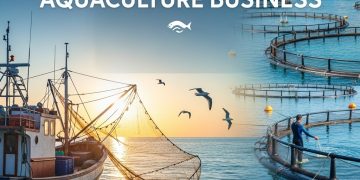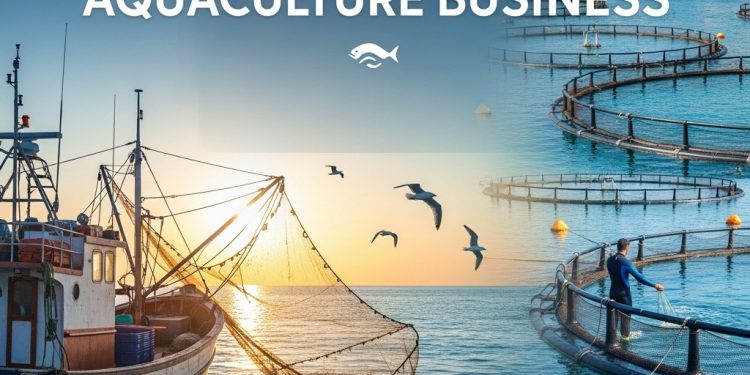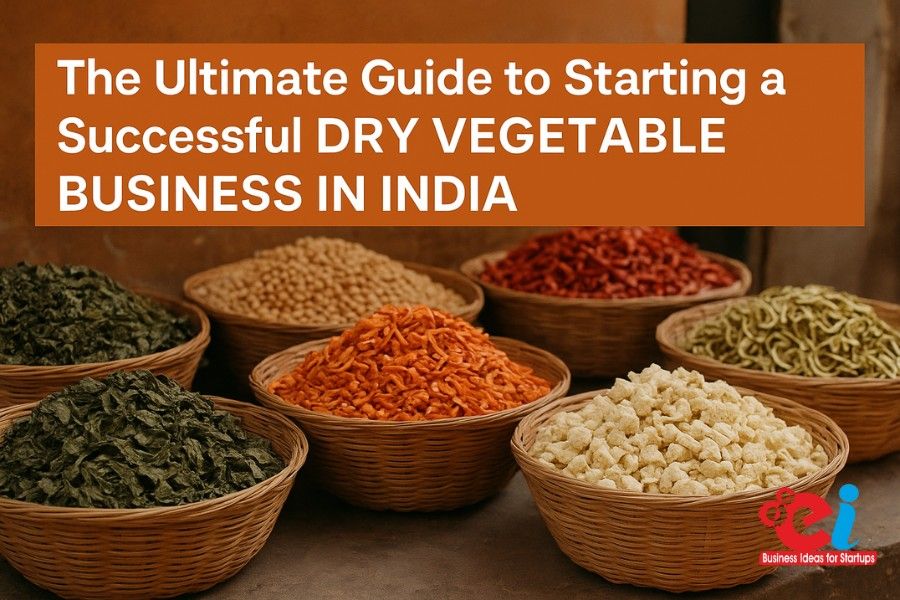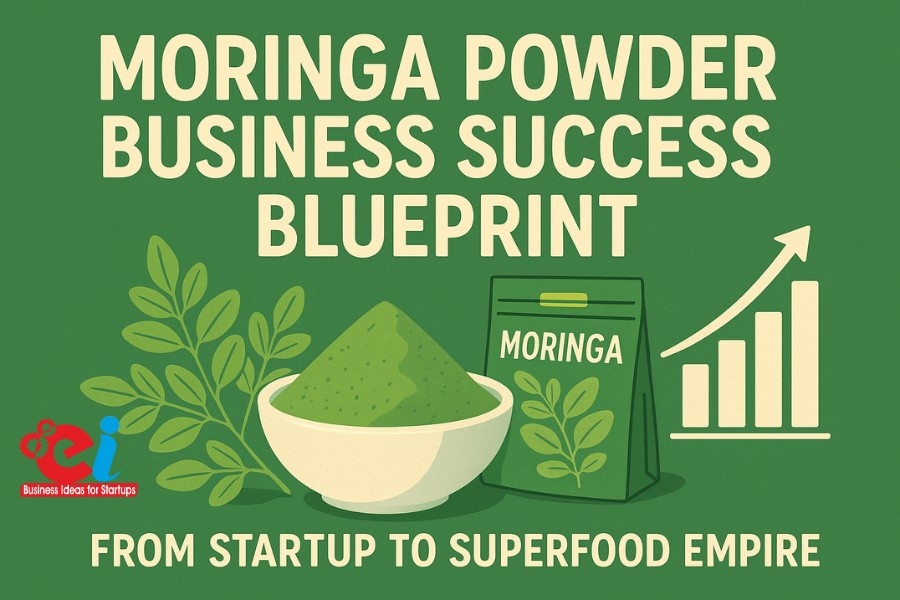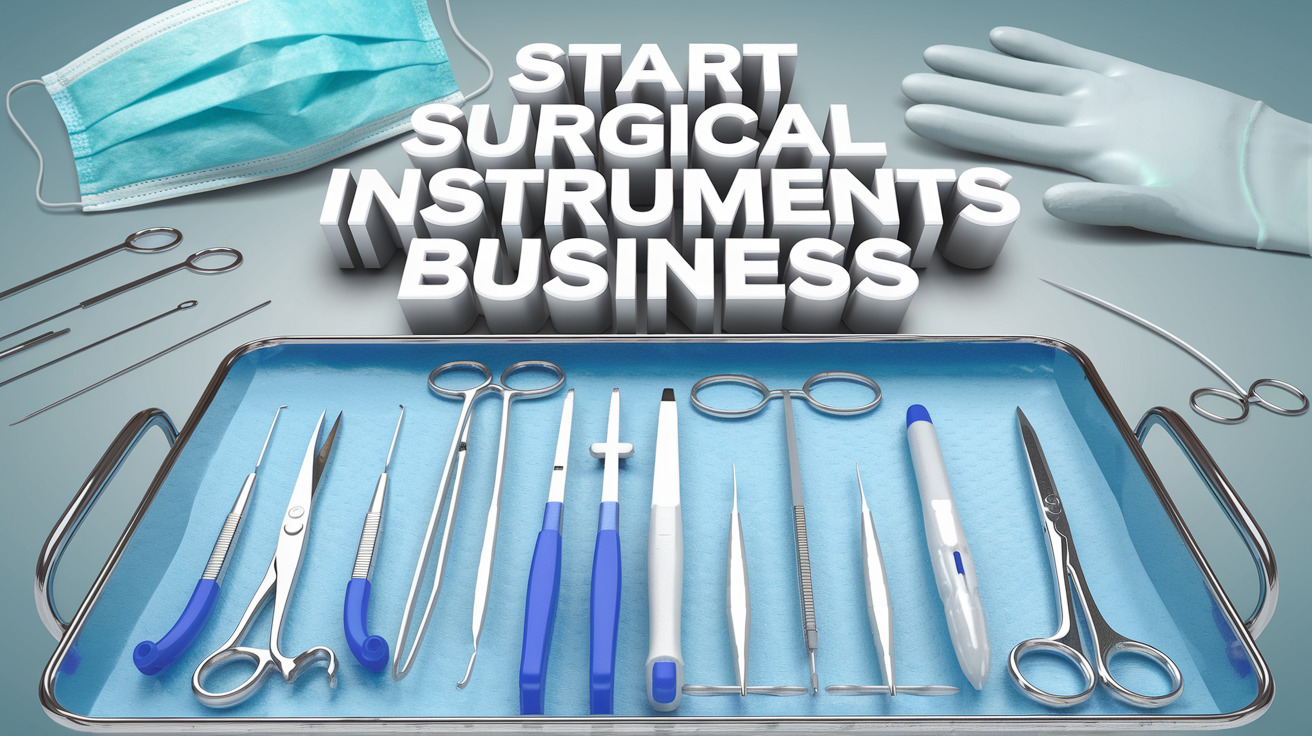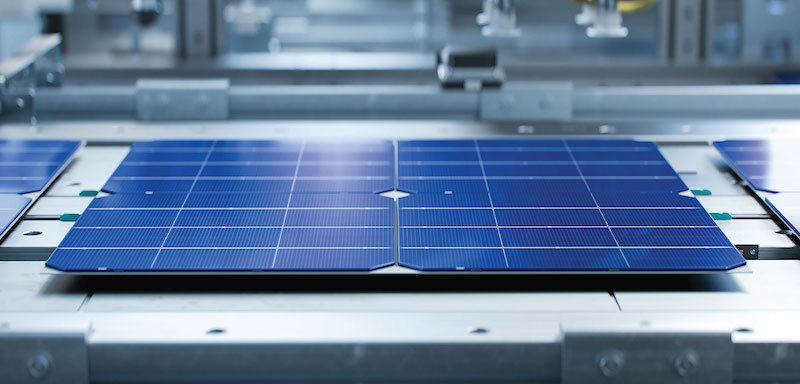Fisheries Aquaculture Business: The aquaculture and fishing industry is one of the world’s most dynamic, lucrative, and globalized industries. Fish and seafood contribute to almost 20 percent of protein eaten around the world, and India is well known as the world’s third largest producer of fish.
Initiatives from the government, like the Pradhan Mantri Matsya Sampada Yojana (PMMSY), coupled with earnings from the industry which is more than 8 billion USD from exports alone, creates great abundance and opportunities for entrepreneurs.
Freshwater fish farming to marine resource processing and value added products, there are significant and abundant opportunities for new ventures to create resource conserving, scalable, and profitable businesses.
Farming of Fish in Freshwater (Rohu, Catla, and Tilapia)-Fisheries Aquaculture Business
Within the aquaculture industry, one of the most profitable businesses is with the farming of freshwater fish. Catla, Rohu, and Tilapia are quick-growing, high-demand fish that are very profitable.
There is government assistance and developed strategies in fish pond management that allow for entrepreneurs to develop sustainable fish farming units for the domestic and export markets.
Read Our Book: Click Here
Shrimp Farming and Its Processing Immediately after Draining
Shrimp is regarded as the dominant exported fish from India and is the single largest contributor towards the country’s fisheries foreign earning.
It is Shrimp having bio-security and feeding management intensive and semi-intensive farming which ensures the advanced techniques of high yield Profit margins available under integrated shrimp farming and processing units are ever-consistent, and the export prospects are superb.
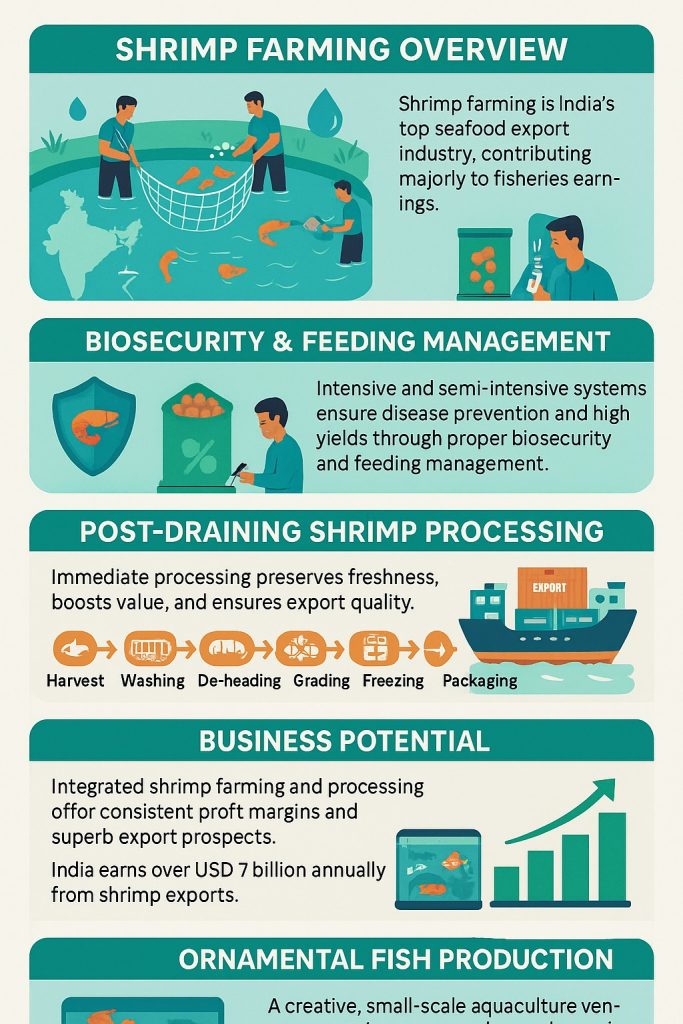
Other Form of Shrimp Farming
Ornamental fish farming is one of the few artistic businesses that satisfy the unending demand of the aquarium industry. Fish such as guppies, gold fish, and angelfish belong to the category that have always been and continues to be in enduring demand across the globe. Fish entrepreneurs are also unencumbered by the capital and space restrictions as they are readily able to establish ornamental fish units for both export and domestic supply
Marine Fish Farming (Pomfret and Seabass)-Fisheries Aquaculture Business
This segment of marine fish farming aims at high productivity and focuses on the high-value fish pomfret and seabass. It serves the purpose of high productivity and also meets the growing demand in the international seafood market. Coastal cages and core hatchery seed production systems together enable the fish farmers to achieve maximum productivity.
Export-oriented marine aquaculture also offers profitable and numerous business prospects.
Integrated Aquaculture Systems
Integrated aquaculture involves farming fish alongside some form of livestock or crop production, thus forming an integrated, sustainable, low-cost system of aquaculture.
Fish waste, for example, can lower crop production costs by serving as fertilizer. This system can be used by entrepreneurs to increase productivity and diversify income streams.
Fish Hatchery and Seed Production-Fisheries Aquaculture Business
Hatcheries are important to aquaculture as they provide the necessary seed stock for fish farms. Farmers are guaranteed high yields with the production of fast growing, healthy fingerlings of sought after species. This supply is stable within regions employing aquaculture.
Recirculating Aquaculture Systems (RAS)
This system permits the highly efficient, and land based, cultivation of fish devoid of any connection to open water, and offers nearly total biosecurity. RAS units, which are compact and highly productive, can be installed and operational within city limits to provide sustainable, economically viable fish to the urban market.
Cage and Pen Fish Culture-Fisheries Aquaculture Business
Floating cages in rivers, reservoirs, and costal bays allow for better growth and overall health of fish. This, along with newly adopted techniques of Cage and Pen culture in India, facilitated by the PMMSY and fisheries departments, improves fish farming practices.
Fish Feed Manufacturing Units
Locally produced fish feeds are essential for aquaculture and therefore should be designed and priced appealingly. These fish feeds are in the form of floating and sinking pellets specifically designed to aid fish farmers for better fish production in an area.
Cold Storage and Ice Plants for Fish-Fisheries Aquaculture Business
Fish processing with modern cold storage and ice plants results in reduced spoilage, especially when located and operated near fish landing centers. These facilities can be used by ice majors to fish processors and traders to generate steady revenue by offering cold chain services.
Freezing and Canning Processing Plants
Considerable economic value can be attained by processing fish which involves transforming raw fish into either a semi-finished or finished product.
The value of investment in freezing, canning and filleting units will subsequently lead to an increase in exports. The global demand for seafood is on an increase and, therefore, profitable modern fish processing is seen to yield high profits.
Read Our Project Report: Click Here
Enhanced Convenience Fish Products-Fisheries Aquaculture Business
The rising number of urban consumers is increasingly interested in fish curry, fish nuggets and fish fingers.
These products, indeed, are convenient, easily prepared and greatly help in saving time. There is a demand for a value added processing unit and, thus, a processing unit is in place to capture the domestic and lucrative market.
Surimi and Fish Fillet Production
Many food chains worldwide serve fish fillet and surimi which are seafood products. There is also a great demand for processed fish protein, thus an ample potential for exports. As for modern plants that are designed to serve the domestic and international market, they serve as freezing and packaging facilities.
Dried and Smoked Fish Products-Fisheries Aquaculture Business
Dried and smoked fish products are both traditional products with reasonable market acceptability, long marketability, and shelf life. The drying and smoking procedures increases the aroma and taste while retaining the shelf life.
With the appropriate packaging and export marketing, entrepreneurs can target both the domestic and foreign markets.
Fish Oil Extraction and Refining
With the growing importance of omega-3 fatty acids within the pharmaceutical and nutraceutical industries, fish oil comes in handy. Entrepreneurs can extract oil from fish, fish waste, or small pelagic species, and create a valuable by-product. Oil refineries extract and purify the oil to a high standard before supplying to the support and oil industries in national and international trades.
Fish Meal
Fish meal is a valuable component in livestock, aquaculture, and poultry nutrition. Coastal areas are ideal locations for Fish meal plants, enabling fish waste to be fully utilized. Entrepreneurs stand a chance to make huge profits by exporting fish meal to foreign countries.
From Fish Waste to Collagen and Gelatin
Fish waste has been converted to another highly profitable business, buoy value. A part from cosmetics and pharmaceuticals, even the food industry has a use for the products. The demand for sustainable products can be harvested by such start up companies to command better profit margins over their rivals.
Fish Skin and Its By-Products
A novel and valuable product fish leather can be derived from fish skin which has application in the fashion and accessories industry.
Sustainable methods can be employed to reduce tanning fish skin, which reduces total waste. In addition the distinct fish leather product the industry has ample opportunity for high value luxury goods exports.
Aquaponics-Fisheries Aquaculture Business
Farming innovations such as awuaponics integrate fish farm and hydroponic vegetable garden into a single closed system. Plants use the fishwater which contains nutrients to grow and in turn the fish get their water purified and filtered by the plants. This approach has zero waste and is ideal for urban farming and small scale business.
Shell Fish Farming
The farming of shellfish such as oysters and mussels is immensely profitable and has a strong demand for exportation. Shellfish farming for entrepreneurs living near the coast becomes a highly beneficial and effective business model due to the zero or minimal capital investment and naturally occurring feed. Such a business model is profitable and highly sustainable.
Seaweed Farming and Seaweed Products-Fisheries Aquaculture Business
Seaweed farming is yet another sustainable business model which has a low barrier to entry. Seaweed has applications as food as well as in the cosmetics and pharmaceutical industries which provides seaweed entrepreneurs with plenty of opportunities to make a profit.
The ability to foray into the production of processed and dried seaweed, seaweed-based products, and alginates and the ever-changing geo-political landscape focused on marine bioproducts is a definite advantage for new entrepreneurs in this field.
Read More: Fisheries and Aquaculture Sector in India
Processed Shrimp Products-Fisheries Aquaculture Business
Ready-to-eat processed shrimps in international markets is another processed seafood product that fetches a high price. The new advanced processing and packaging plants offer increased profit margins to the country as well as a significant contribution towards the global competitiveness.
Units for Packaging Seafood for Export
Quality control is highly determined by the method of packaging. These units will be designed with seafood packaging facilities and auxiliary facilities for vacuum packaging, freezing and labelling, thus enhancing shelf stability. Export processors’ needs will be met and entrepreneurs will appreciate the recurrent revenue from contact packagaing.
Manufacturing Fishing Gear-Fisheries Aquaculture Business
Besides the rapidly developing market for aquaculture accessories like aerating apparatus, tanks and nets, aquaculture equipment manufacturing units will help entrepreneurs offer essential business services to the sector. This will highly benefit the further development of both inland and marine aquaculture.
Other Marine Products of Value like Nutraceuticals, Omega-3 Capsules and More
There is a growing international market for marine nutraceuticals and nutraceuticals, especially the omega-3 capsules, due to the proven health value. Entrepreneurs are in a good position to take advantage of this by producing nutraceuticals from bioactive fish oil and extracts from algae, thus having a competitive edge. This is a very profitable opportunity and a good prospect for export.
How NPCS Can Assist You
NIIR Project Consultancy Services (NPCS) undertakes customized and specialized consultancy for implementing aquaculture and fishery projects having strong economic viability.
NPCS conducts detailed Market Survey-cum-Techno-Economic Feasibility Reports (DPRs) for their clients, which include fabrication techniques and their corresponding materials, process flow diagrams, equipment and financing, and market position assessment.
Find the Best Idea for Yourself With our Startup Selector Tool
Conclusion-Fisheries Aquaculture Business
The business dealings within aquaculture and fishery industries provide various opportunities that include farming freshwater fish and adding value to other marine resources.
Growing global seafood consumption, coupled with the support to the sector available under PMMSY, makes this sector a viable source of income with great export potential.
FAQs-Fisheries Aquaculture Business
What is aquaculture?
The farming of fish and shrimp as well as various types of seaweeds and other marine beings under controlled conditions for food and any other commercially viable purposes is termed as aquaculture.
What are the reasons for fish farming to be profitable in India?
India is endowed with a great number of water resources and the capability to serve the local fish and seafood market as well as the potential to export.
What fish species are easiest to start with?
New fish farmers are likely to find Rohu, Catla, and Tilapia the most productive, given their maintenance level and faster growth.
Is it possible to repurpose fish processing waste?
Yes. Fish waste, along with other fish by-products, can be profitably converted to fish oil, collagen, gelatin, and fertilizers and, in the process, achieve zero waste.
What kind of support can NPCS provide to people working in this business?
NPCS supports entrepreneurs in aquaculture by supplying them with in-depth project reports, specialized assistance, and an evaluation of the fiscal sustainability of their proposed initiatives.
